The Industrial Revolution was built on the invention of new materials and the machines that allowed them to be mass produced into cheap products, quickly. The exploitation of sweatshop laborers had a profound impact on society. Plastic comb making was no exception.
In America, the most famous factory was in Leominster, Massachusetts. In France, combs were made in Oyonnax, an administrative region of Ain, which is located in the Rhône-Alpes. The town even has a Museum of the Comb and of the Plastics Industry.
Some of Auguste Bonaz’s combs were made there.
Today, collectors think only about the artwork, the artist, design genius, and have an image of a master carving a masterpiece with his own hands.
After 1900, however, women sat for 16 hours a day in front of hydroelectrically powered turning machines. Then the French mechanic Humbert adapted the band saw, which allowed plastic combs to be cut in patterns. In 1871, Lyon Vuillermoz invented a machine that enabled a worker to punch the pattern into the plastic with a single stroke of the arm.
Here is what the women who made plastic combs in Oyonnax looked like.
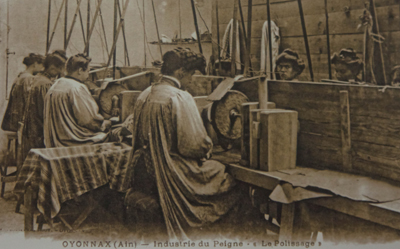
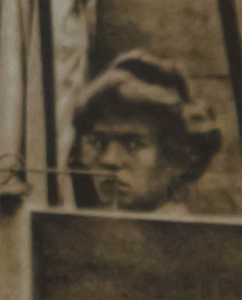
Here are some of Auguste Bonaz’s glorious designs that they might have made.
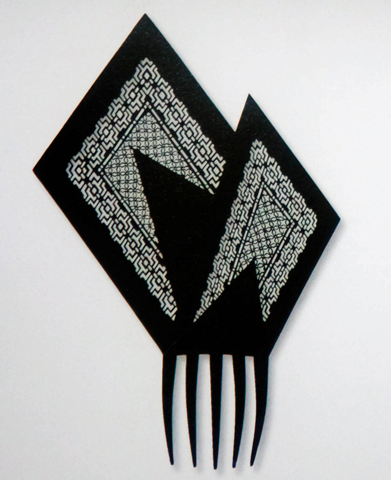
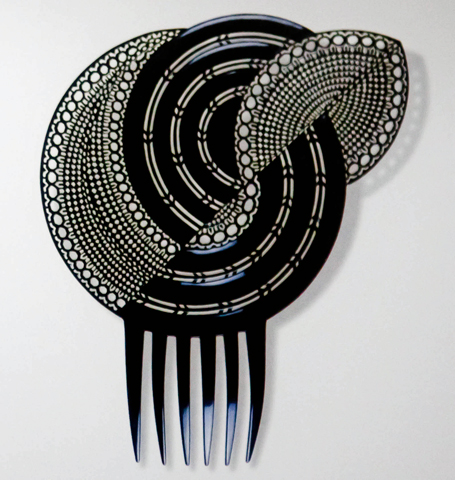
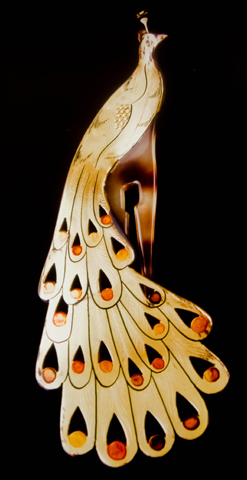
कंघी
For more scholarly research, please examine
The Comb: Its History and Development by Jen Cruse
Plastic Jewelry of the Twentieth Century: Identification & Value Guide

It’s almost enough to make me disburse my comb collection.
You’re right – I never thought of sweatshop labor involved in the creation of hair combs. But of course they were being mass-produced, so how else would this have been done, considering the period in which they were made?
No credit for their effort in creating beauty in a mean, dark world….
You are absolutely right. I bought the book, “Le Peigne,” by Robert Bollé on ebay. It’s not available anywhere else, which is why I did not list it as a scholarly reference. I couldn’t find the ISBN number.
This book had pictures of the comb sweatshops. It’s that question of how do you not see the elephant in the room? We know how clothes were made. We know the history of labor unions in the United States. We know about sweatshop labor in the textile industry now, whether you shop at Wal-Mart or Saks Fifth Avenue. Why wouldn’t these conditions have applied to mass production of plastic combs?
I was shocked. My image of comb making centered around Lalique carving an ivory orchid in the peace of his own studio, or of a great Edo master doing the same thing, or Louis Comfort Tiffany’s dragonflies in the Metropolitan Museum.
I never thought of this either. But I will never look at those plastic parrot combs the same way again.